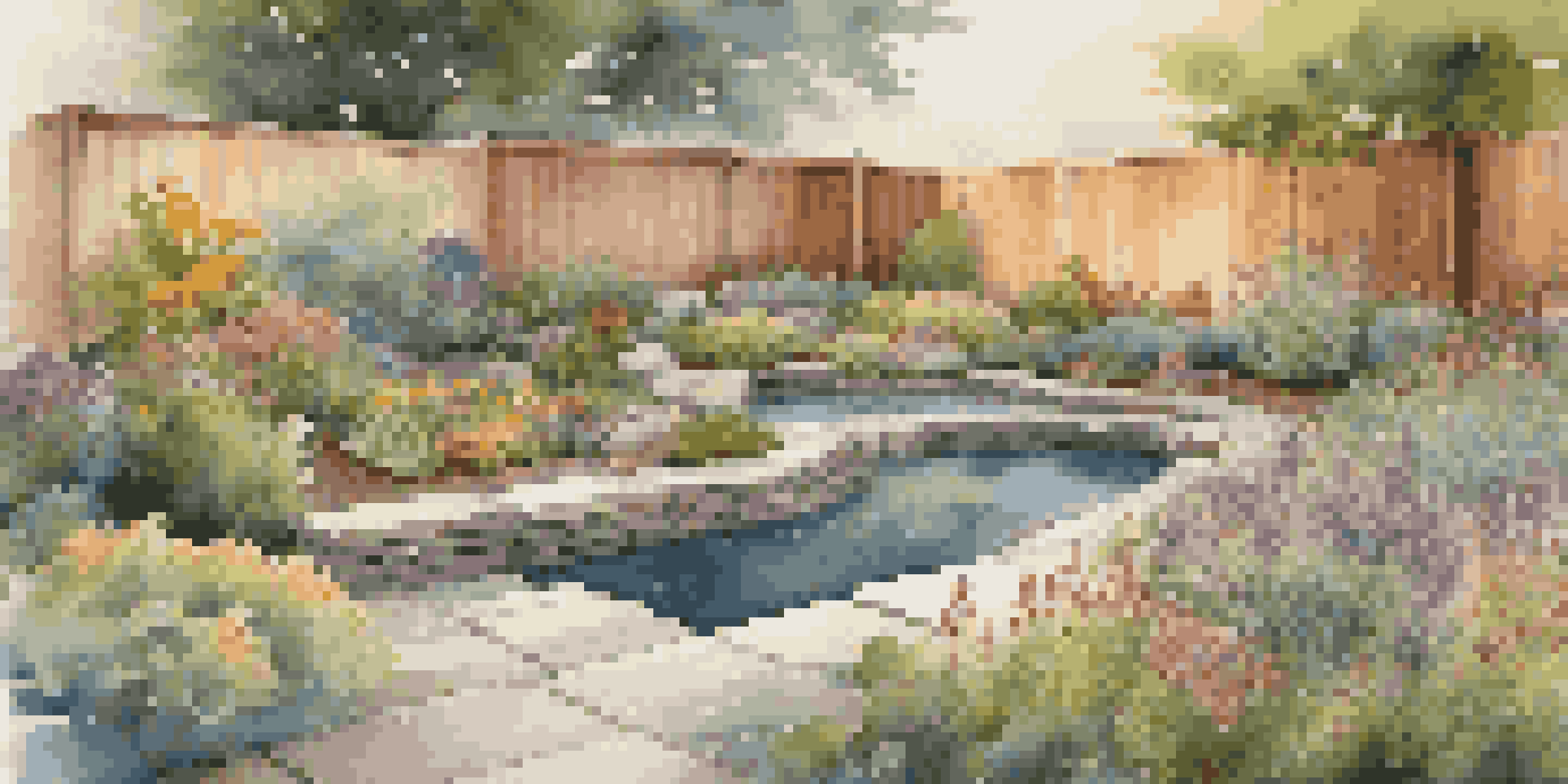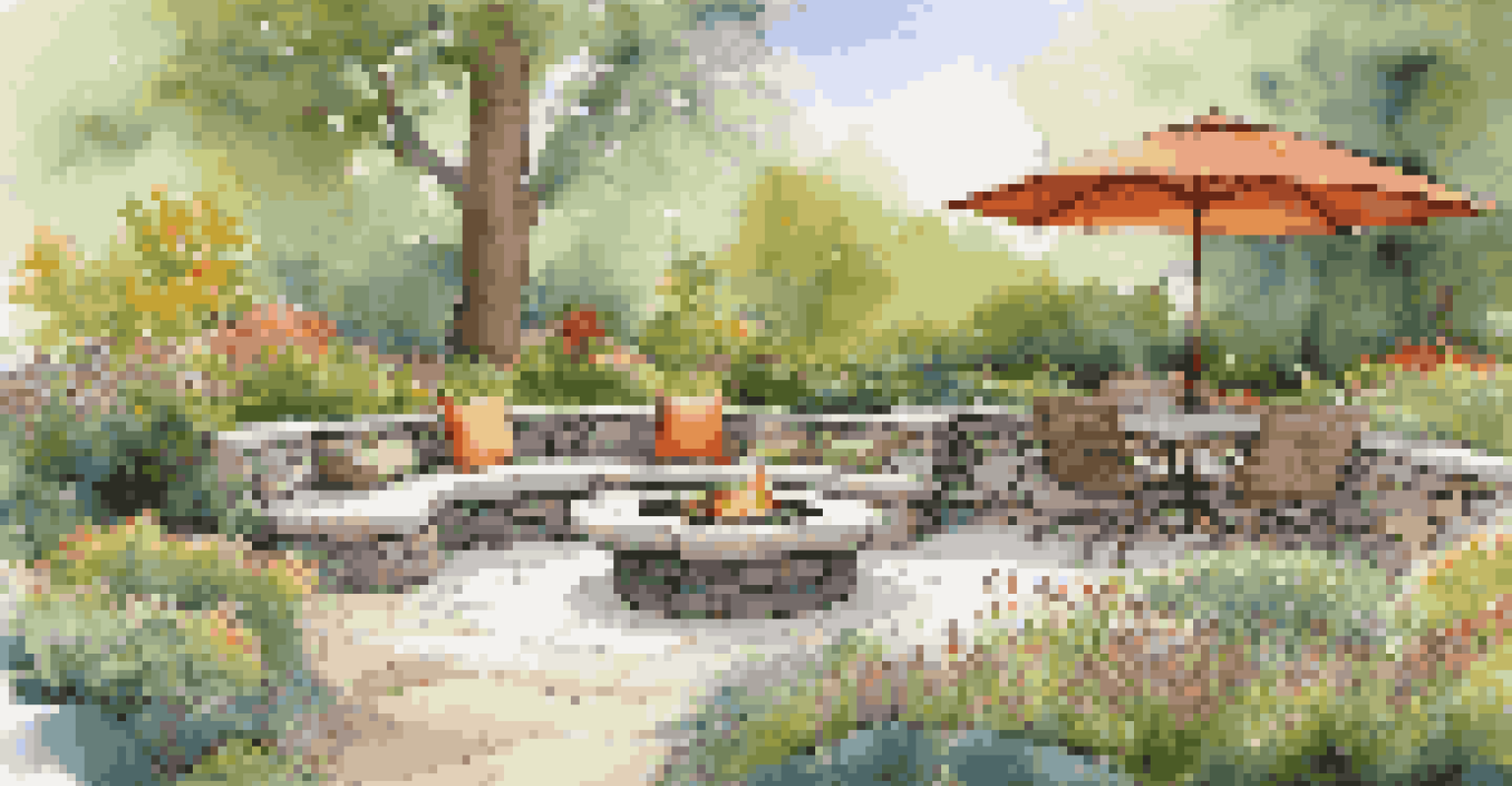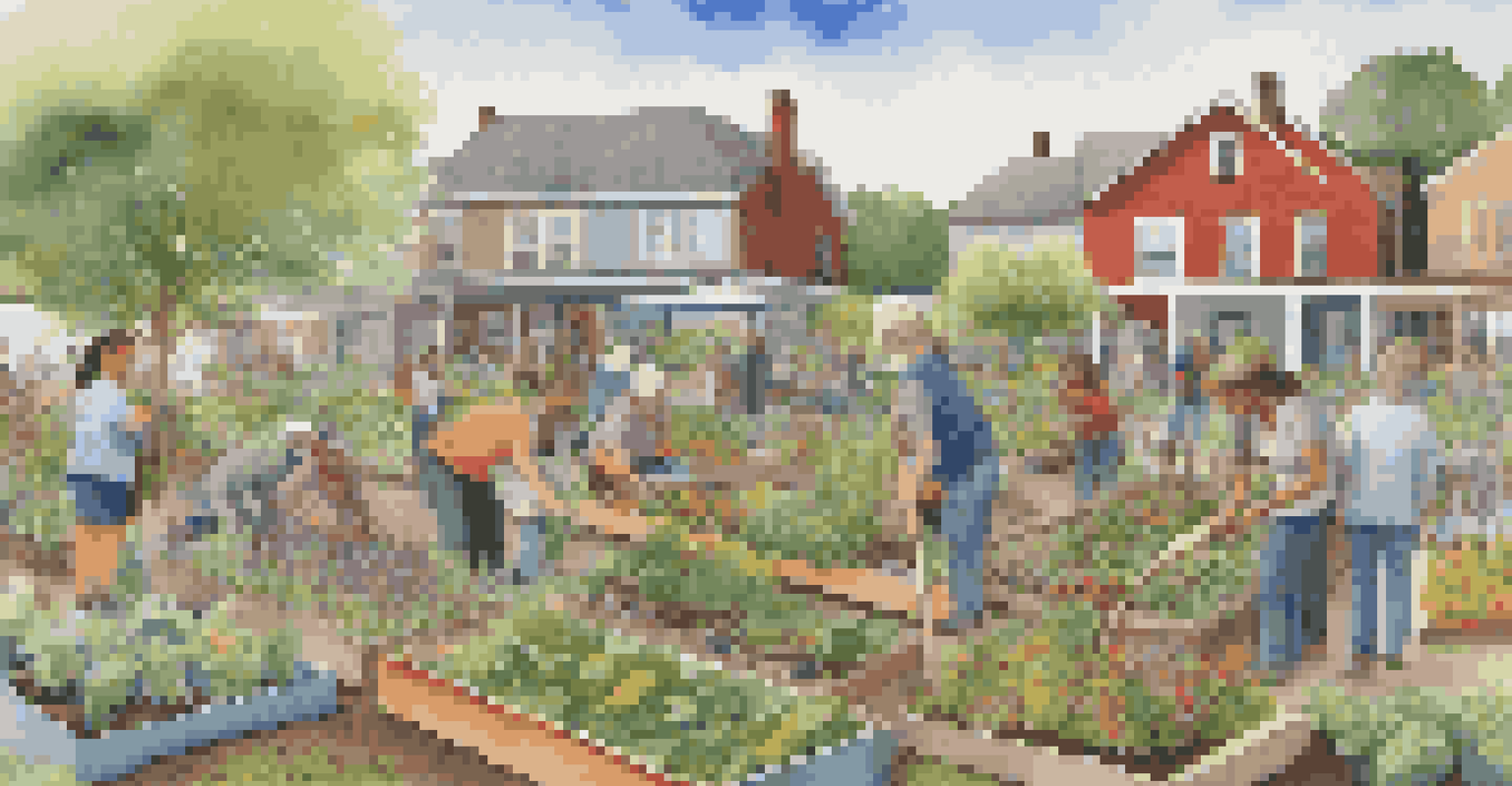Designing Outdoor Spaces for Sustainable Living

Understanding Sustainable Living in Outdoor Design
Sustainable living focuses on using resources in a way that meets our needs without compromising future generations. When it comes to outdoor spaces, this means creating environments that are not only beautiful but also promote ecological balance. Think of it as a dance between nature and human-made elements, where both can thrive together.
The environment is where we all meet; where we all have a mutual interest; it is the one thing all of us share.
Integrating sustainable practices in your outdoor design can include using native plants, which require less water and maintenance. Additionally, considering the placement of trees and shrubs can help reduce energy costs by providing natural shade. This way, your outdoor space becomes a living part of the ecosystem, supporting local wildlife while enhancing your enjoyment.
Ultimately, designing with sustainability in mind encourages us to think about our impact on the planet. By making informed choices, we can create outdoor areas that reflect our values and contribute positively to the environment. This shift towards eco-friendly design is not just a trend; it's a necessary step towards a healthier future.
Choosing Native Plants for Your Outdoor Space
One of the best ways to promote sustainability in your garden is by choosing native plants. These species are adapted to your local climate and soil, making them resilient and low-maintenance. Just imagine a garden that thrives without the need for excessive watering or chemical fertilizers—sounds appealing, right?

Native plants also provide essential habitats and food sources for local wildlife, including birds, butterflies, and beneficial insects. For example, planting milkweed can attract monarch butterflies, ensuring their survival while adding beauty to your space. This creates a vibrant ecosystem right in your backyard, fostering a sense of connection to nature.
Embrace Native Plants for Sustainability
Choosing native plants not only enhances your garden's beauty but also supports local wildlife and requires less maintenance.
Additionally, native plants often require less upkeep, saving you time and resources. By spending less time mowing or trimming, you can enjoy your outdoor space even more. So, when planning your garden, think local and let nature take the lead!
Incorporating Water-Saving Techniques
Water conservation is crucial in sustainable outdoor design, especially in areas prone to drought. Implementing techniques like rain gardens or xeriscaping can dramatically reduce water usage while still providing an attractive landscape. Picture a garden that flourishes with minimal irrigation—it's both practical and beautiful.
Sustainability is no longer about doing less harm. It's about doing more good.
Rain gardens are designed to capture and absorb rainwater runoff, allowing it to filter back into the ground rather than flowing into storm drains. This not only helps replenish groundwater but also reduces the risk of flooding. By designing your outdoor space with these techniques, you're playing a part in managing water resources effectively.
Moreover, incorporating drip irrigation systems can deliver water directly to the roots of your plants, minimizing waste. These systems are efficient and can be automated, making it easier for you to maintain a healthy garden. As you design your outdoor space, consider how these water-saving techniques can enhance both sustainability and beauty.
Creating Outdoor Spaces for Biodiversity
Biodiversity is vital for a healthy ecosystem, and your outdoor space can contribute significantly to this. By creating a variety of habitats—such as flower beds, shrubs, and small trees—you encourage different species to thrive. Think of your garden as a mini nature reserve, where every plant serves a purpose.
Incorporating features like birdhouses, bee hotels, and native wildflowers can attract a diverse range of wildlife. For example, adding a small pond can support amphibians and provide a drinking source for birds. Each addition helps create a balanced environment that enhances both your outdoor enjoyment and local biodiversity.
Implement Water-Saving Techniques
Incorporating strategies like rain gardens and drip irrigation helps conserve water while maintaining a thriving outdoor space.
Furthermore, designing for biodiversity often leads to a more resilient garden. A diverse range of plants can withstand pests and diseases better than monocultures. So, when planning your outdoor space, remember that variety is not just the spice of life; it’s essential for a thriving ecosystem.
Utilizing Sustainable Materials in Outdoor Design
The materials you choose for your outdoor spaces can have a significant impact on sustainability. Opting for reclaimed wood, bamboo, or recycled materials can reduce your carbon footprint and promote eco-friendly practices. Imagine building a deck from reclaimed wood that tells a story—it’s not only sustainable but also unique.
Additionally, sustainable materials often require less energy to produce and can be sourced locally, further reducing transportation emissions. For example, using local stones for pathways not only supports your community but also blends beautifully with the natural landscape. This thoughtful approach to material selection can enhance your outdoor experience.
Moreover, investing in durable materials can lead to long-term savings. While the initial cost might be higher, the longevity of sustainable materials means fewer replacements and repairs down the line. So, as you design your outdoor space, consider materials that are both functional and environmentally friendly.
Designing Functional Outdoor Spaces for Relaxation
Creating an outdoor space that promotes relaxation is key to enjoying the benefits of nature. Consider incorporating comfortable seating areas, shaded spots, and soothing water features. Imagine curling up with a book on a cozy bench surrounded by fragrant flowers—pure bliss, right?
In addition to aesthetics, functionality is crucial. Designing pathways that guide you through your space can enhance the experience, inviting exploration and discovery. Using natural materials for walkways can create a seamless transition between your garden and home, making it feel like an extension of your living space.
Foster Community Engagement
Involving the community in sustainable outdoor projects cultivates connections and empowers individuals to contribute to local environmental efforts.
Moreover, including elements like outdoor lighting can prolong your enjoyment after sunset. Soft, ambient lights can create a magical atmosphere, perfect for gatherings or quiet evenings. So when designing your outdoor sanctuary, think about how to balance beauty and functionality for ultimate relaxation.
Engaging the Community in Sustainable Outdoor Projects
Bringing the community together for sustainable outdoor projects can amplify your impact. Organizing local clean-up days or community gardens not only beautifies the area but also fosters connections among neighbors. Imagine the pride of seeing a once-neglected park transformed into a vibrant space for all to enjoy.
Community involvement can also lead to shared knowledge and resources. Workshops on sustainable gardening practices or native plant identification can empower individuals to make eco-conscious choices. By pooling talents and ideas, communities can create outdoor spaces that reflect their unique values and needs.

Furthermore, engaging community members in design decisions can lead to a sense of ownership and responsibility. When people feel connected to their environment, they are more likely to care for it. So, as you embark on your outdoor design journey, consider how collaboration can enhance sustainability and community spirit.